What’s your ethical range?
It’s a question hunters should pose to themselves, now more than ever. And in so many words, it was the first question the instructors asked when I attended Outdoor Solutions’ level 1 long-range shooting school, at the Guitar Ranch in West Texas.
Great leaps in firearms designs and manufacturing, plus next-level bullet engineering have extended hunters’ ranges further than ever before. Yet, have the men and women behind the trigger kept up? Or are 1,000-yard rifles shouldered by 100-yard shooters?
Outdoor Solutions founder Greg Ray knows the answer—hence the reason his company’s shooting school was created.
Long-Range Shooting School’s Founding
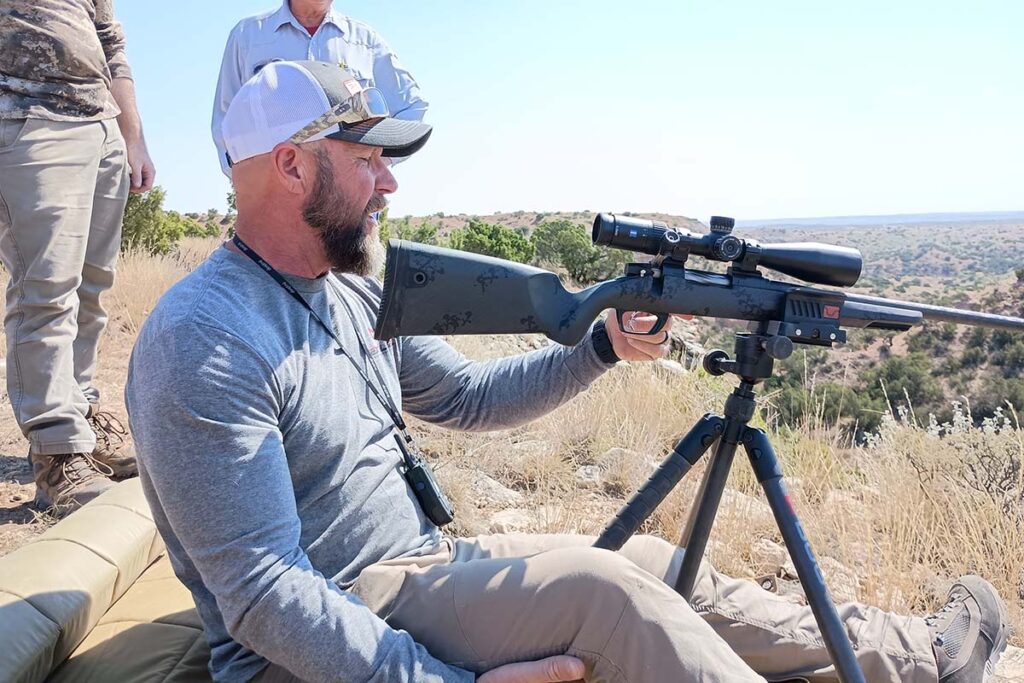
If you’re not familiar with the Oklahoma-based hunting empire of Outdoor Solutions, it essentially helps dreams come true.
Born out of a side hustle, Ray has grown the company into a premier outfitter, primarily focused on what are for many once-in-a-lifetime hunting and fishing expeditions. However, he noticed an issue for many who planned to shell out thousands of dollars for big-time Western hunts.
Faced with an arena where 400- or even 500-yard shots are called for, many potential hunters were cowed by the prospect. In turn, they looked for other, to their minds, safer alternatives.
The school was founded in 2011 to remedy this major hurdle and in nearly a decade and a half has honed its curriculum into an efficient and practical shooting course. In addition to Texas, the company also runs schools in Utah and Michigan.
The big claim to fame Ray and his crew of instructors love to ballyhoo is they’ll get you to hit at 1,000 yards in the two-day course. We must have been advanced, because a mixture of gun writers, and beginner and intermediate hunters were banging steel at that distance by the end of day one.
Go back a little more than a decade or so, this feat—even among advanced marksmen—would have seemed inconceivable. The fact that in less than six hours a random cross-section of shooters was hitting at this range is a testament to what Outdoor Solutions offers.
Ballistic Basics
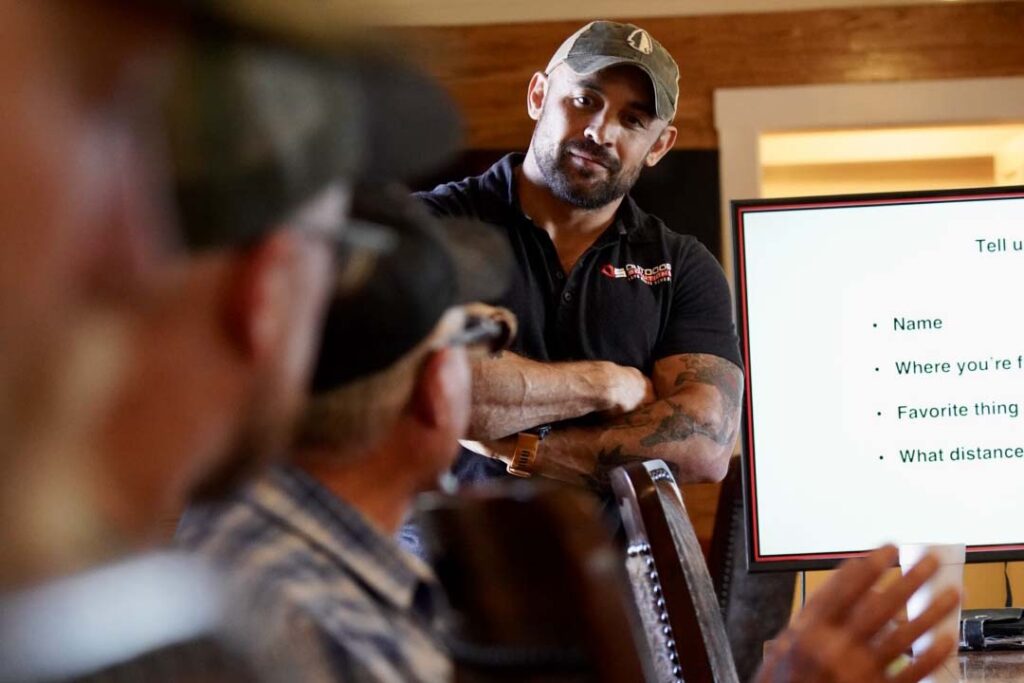

Upon arriving in West Texas and getting settled into my very comfortable cabin at the ranch, the first order of business was delving into the academic aspects of long-range shooting. This is a vast topic of which volumes can and have been written on (a side note we have an excellent book on the topic, The Ballistics Handbook).
Much of the evening was spent learning to read mirage and environmental features for wind speed and direction, learning the particulars of our scope reticles and, of course, understanding bullet drop.
Additionally, there was a heathy dose of spotter training. The course is designed around two-man shooter-spotter teams, similar to the military. Spotters were given the basics of how to track shots off the bullets trace or glint, evaluate impacts and quickly communicate adjustments.
Having solo hunted much of my life, I gained a new appreciation of having a partner in the field. If there was any one area I walked away improved in after the course, it was in the role of a spotter.
We also got downloaded, set up and got into the finer points of the GeoBallistics app, which would provide us with our shooting solutions for the class.
While this might sound like a load of info, it was compressed into a mere 2 hours. The long-range shooting school isn’t focused on on-paper ballistics, but in-field shooting.
As Steve Aryan, Outdoor Solution’s Director of Instruction, pointed out in his conclusion of the classroom work, “Repetition is the best teacher.” You only get that behind the trigger.
Gearing Up
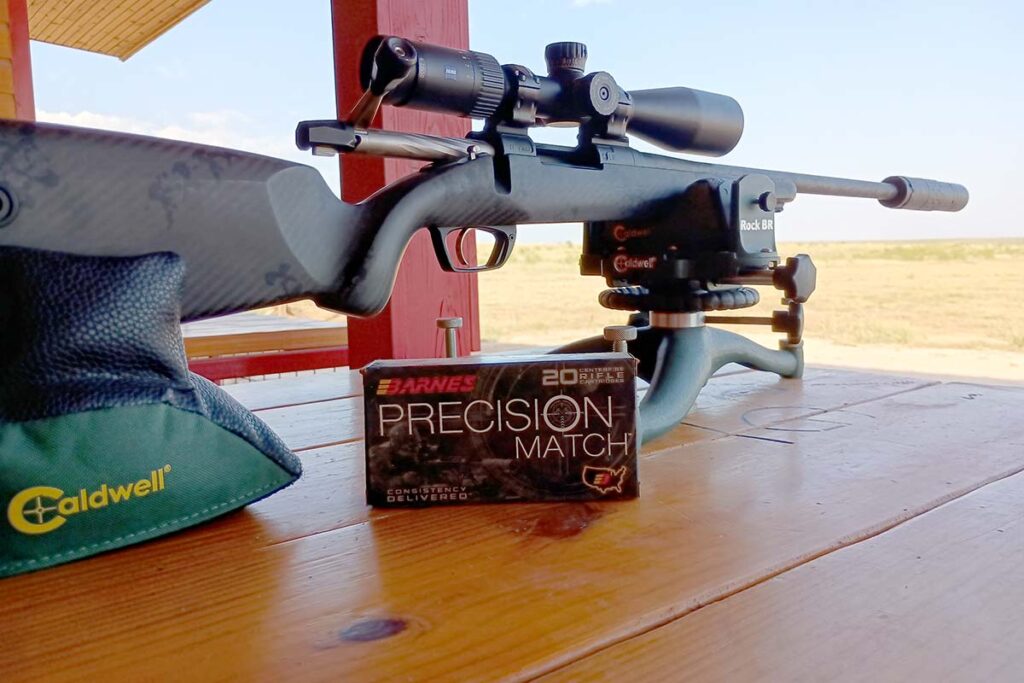

The next day was the start of the live-fire section of the course, but the first order of the day was getting equipped.
Outdoor Solutions urges shooters to bring their own equipment, after all, that’s the rifle and scope they’ll head out in the field with. However, the school has an incredible selection of precision hunting rifles to choose from if you don’t want the hassle. Benelli, Christensen Arms, AllTerra and GunWerks lined the absolutely gorgeous range’s racks.
I went with the GunWerks ClymR 6.5 Creedmoor rifle, topped with a Zeiss Conquest V4 6-24X 50mm scope and outfitted with a SilencerCo. Omega suppressor. It turned out a solid choice when slinging 140-grain Barnes Precision Match—Outdoor Solutions ammunition of choice for the class.
Guns situated, it was on to bench shooting.
Bench Shooting
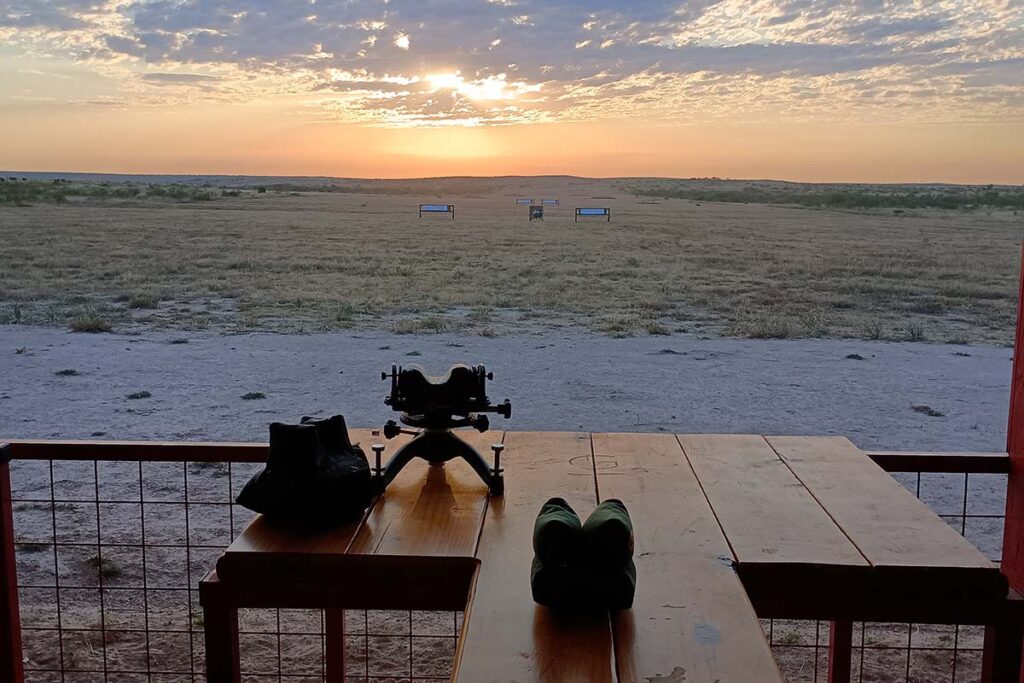

While anyone who’s done any amount of hunting will attest, this is the least realistic style of shooting. Yet, there are solid reasons behind this crawling-before-learning-to-walk approach.
First off, it gave shooters the opportunity to become comfortable with their hardware and get to know their rifle and scope. It also offered the instructors time to evaluate and address any gaping holes in the shooters’ mechanics. Finally, it was an opportunity to learn to adjust for range and wind in a controlled environment, unencumbered by the slew of variables encountered in the field.
To the point of the wind adjustments, West Texas didn’t disappoint offering up a constant 5 to 10 mile per hour blow that challenged shooters, but didn’t make connecting with a target impossible.
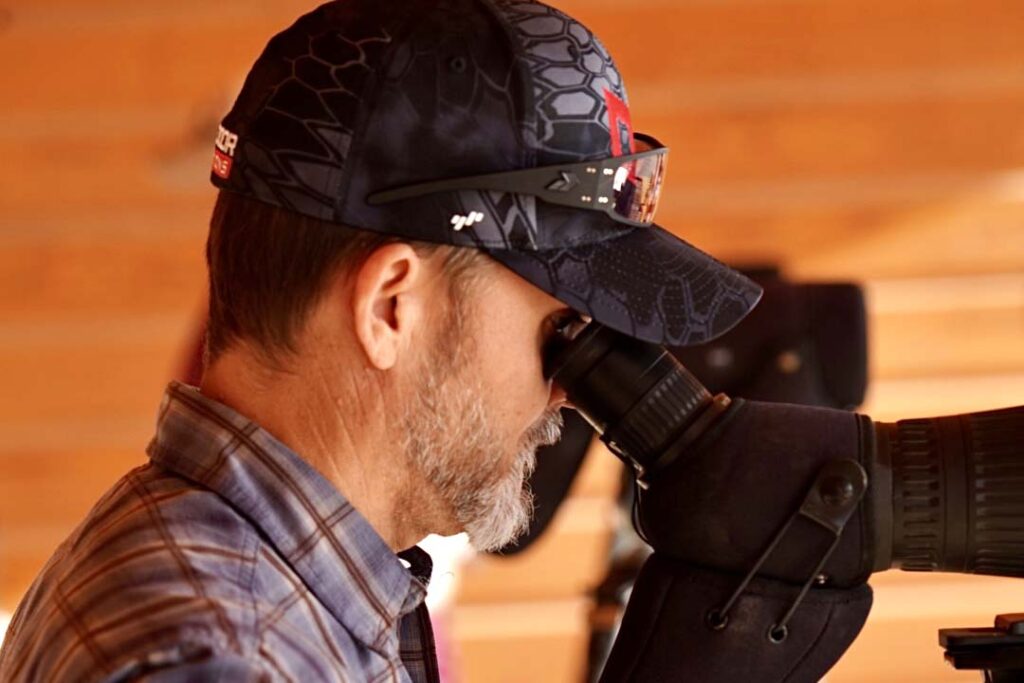

The course of fire started at a 100-yard sight in and progressed in 100-yard increments out to 1,000 yards. The impressive part was the entire class was banging away at 3 MOA steel targets at the furthest range by day’s end.
This included a father-son team that not only were taking their first steps into long-range shooting, but—for the most part—rifle shooting in general. That’s a big leap for a tandem who said their effective range was 100 yards at the start of the school.
Field Shooting Scenarios
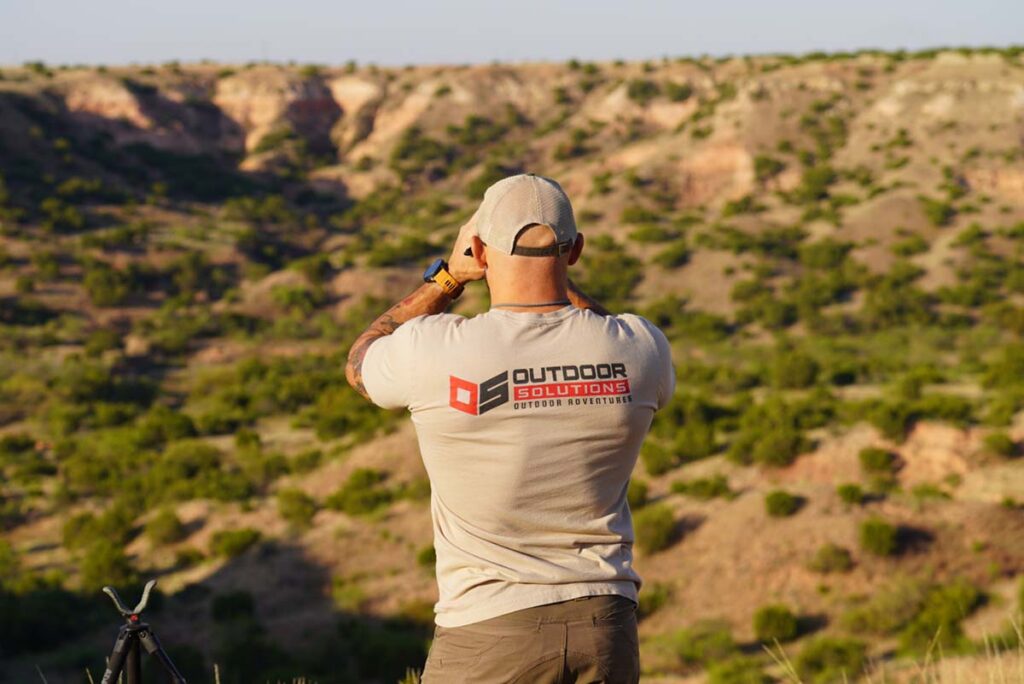

The Guitar Ranch backs up onto the rimrock canyons of West Texas. Besides providing a starkly beautiful backdrop, the terrain also makes an excellent arena for the long-range shooting school’s field shooting course. On the final day we headed out to these wilds to put what we learned in a controlled environment to the test.
Three-dimensional animal targets were our quarry, placed strategically around the canyon where you’d likely find them on a hunt. This meant not simply applying the shooting smarts we sharpened thus far, but also putting our spotting skills to the test.
The mule deer at 300 yards in rushes along a creek bed and an elk at 400 or so yards in pine shadows below a ridge were particularly difficult to get eyes on. Yet, diligence in spotting and proper aim on the shot rewarded you with the very satisfying sound of a steel gong ringing—strategically placed behind the animals’ sweet spot.
Overall, engagement ranges varied from a 100-yard chip-shot coyote to a black bear just shy of 600. The latter was particularly tricky, given there was a hillock to the right of the shooting lane that played havoc with your wind call. Gusts on one side were certainly not like the ones on the other.
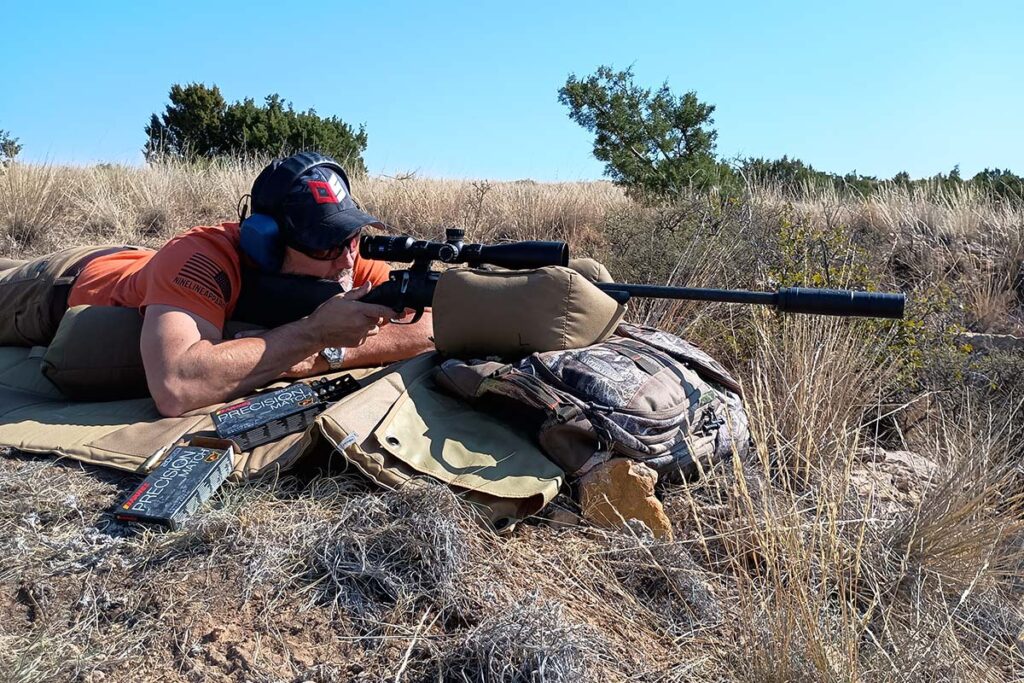

As instructed—and the norm for most long-range shooting—we dialed our drops on these targets but held for wind. Moreover, the shots were taken from several different positions and utilizing different pieces of gear common to modern hunters—shooting sticks, tripods and backpacks.
I must confess, I walked away from this section of the course a little wiser. One particular method that’s going into my bag of tricks is a system of using a shooting bag—a coat or pack will do in the field—tucked under your strong-hand arm, as a rear rest when shooting off sticks or a tripod.
Long-Range School’s Practical Application
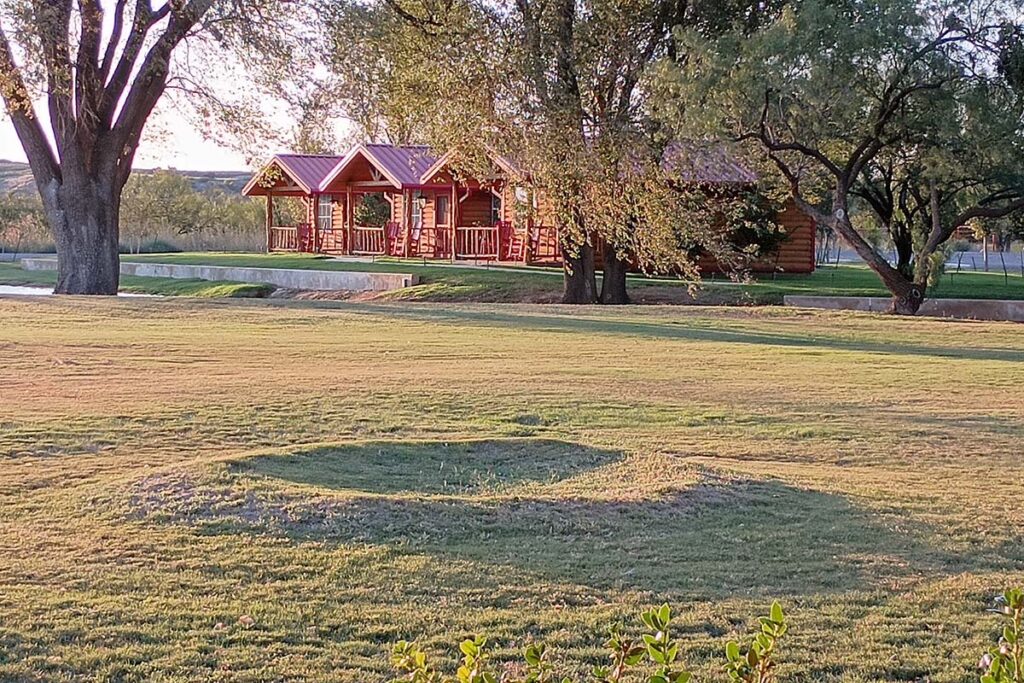

For the record, at the start of the course I pegged my ethical range—where I was confident of hitting the vitals on game—at 400 yards. I’ve taken deer just under that range. After the course and all the instruction, I pegged my ethical range at… 400 yards.
All in all, this fits right in line with what the long-range shooting school was aiming at. Outdoor Solutions hasn’t set its sights on making every hunter into a precision sniper, able to pick an elk off at 1,000 yards. In fact, the instructors discourage this kind of hunting. But going this distance in a controlled and simulated environment is important.
The father-son duo I referred to earlier—dedicated dove hunters—planned on bagging their first deer together. Chances are when they hit the field they’ll take it between 100 and 150 yards—statistics back up my assertion. An even greater likelihood, neither will have any hesitation in pulling the trigger if they put their crosshairs on the critter at this range. After all, they’ve hit targets at 10-times that distance.
Therein lies the benefit of what Outdoor Solutions is attempting to accomplish.
The goal of the course isn’t country-mile kills, but instead more confident hunters. In some cases, that’s pushing a whitetail hunter out his comfort zone to 200 to 400 yards in preparation for a Western hunt. In other cases, it’s simply taking the uncertainty of pulling the trigger 200 yards in and trusting yourself and your equipment to do the rest.
For either scenario, hitting—consistently so—at 1,000 yards makes both less daunting and a heck of a lot more doable. And it makes Outdoor Solutions’ course well worth the money for anyone truly aiming to improve their shooting in the field.
More On Long-Range Shooting:
More Long-Range Shooting:


Next Step: Get your FREE Printable Target Pack
Enhance your shooting precision with our 62 MOA Targets, perfect for rifles and handguns. Crafted in collaboration with Storm Tactical for accuracy and versatility.
Subscribe to the Gun Digest email newsletter and get your downloadable target pack sent straight to your inbox. Stay updated with the latest firearms info in the industry.
Read the full article here






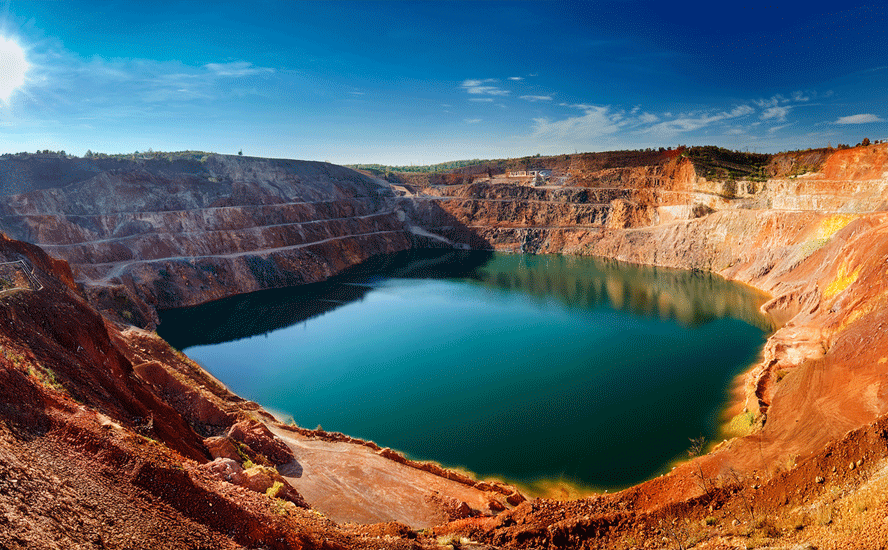





Leave a Reply